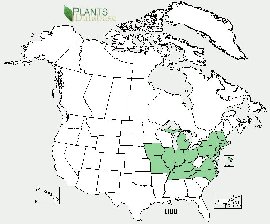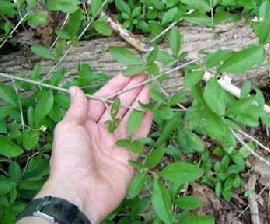Research Associate, MBG
Research Interests
• Conservation Biology: effects of forest fragmentation and threatened species
• Forest Ecology: plant-animal interactions and forest regeneration
• Community Ecology: birds and plants
• Andean Ecology and Ethnobotany
Patterns of Habitat Suitability of Border Privet (Ligustrum obtusifolium) an Invasive Species of Missouri. Requirements for suitable habitats are critical factors for successful control and prevention of invasive species. The Border Privet is a deciduous shrub native from Japan, Korea, and China. It is commonly used as a hedge in landscaping and has several ecological impacts. This species is easily dispersed by wildlife and forms dense thickets that can crowd out native species. In the Midwest this species presents a spotted distribution with the most northern populations occurring in Missouri at the Shaw Nature Reserve. Populations of this species have increased dramatically at the Reserve in recent years. One or two students will describe the suitable habitat for the Border Privet at the Reserve in terms of the abiotic environment. Understanding why this species is occurring in particular locations of the reserve will allow the students to predict potential sites of future colonization and to establish prevention guidelines of invasion. The students will research on the life history traits of this species, and collect data on abiotic variables (i.e. light availability, air and soil temperature, air and soil humidity, and soil compaction) and anecdotal data on biotic-related factors (i.e. herbivores, seed dispersers, and pollinators). In addition, the students will map populations in terms of suitable habitats occupied and unoccupied using GIS tools, and research on techniques of invasive species control.
Selected Publications
• Arango Caro, S. and D. Arenas. In press. Vultur gryphus. In: Gustavo Kattan (ed.). Red Book of Birds of Colombia. 2nd edition. Pontificia Universidad Javeriana, Ministerio del Medio Ambiente, and Instituto de Investigación de Recursos Biológicos Alexander von Humboldt. Bogotá, Colombia.
• Castellanos, L., Arango-Caro, S., Vieira, M.I. and S. Villalobos Hernández. 2008. Species of High Cultural Value Firewood Forests I. Species Series of Colombia 10. Instituto de Investigación de Recursos Biológicos Alexander von Humboldt. Bogotá, Colombia.
• Arango-Caro, S. 2006. Functioning of Biodiversity in Terrestrial Natural Systems: Processes and Interactions. National Report on Advancements on the Knowledge and Information of Biodiversity 2002–2004 (INACIB). Vol. 2, págs. 330–344 en: M.E. Chávez and M. Santamaría (eds.). Instituto de Investigación de Recursos Biológicos Alexander von Humboldt.
• Arango-Caro, S. 2004. Ethnobotanical studies in the Central Andes of Colombia: Distribution of knowledge on the use of plants based on informants’ characteristics. Lyonia 7(2):90–104.
• Arango-Caro, S. 2004. Guide of Medicinal Plants of Common Use in Salento, Colombia. MBG Press. St. Louis. Pág. 71.
 |
 |